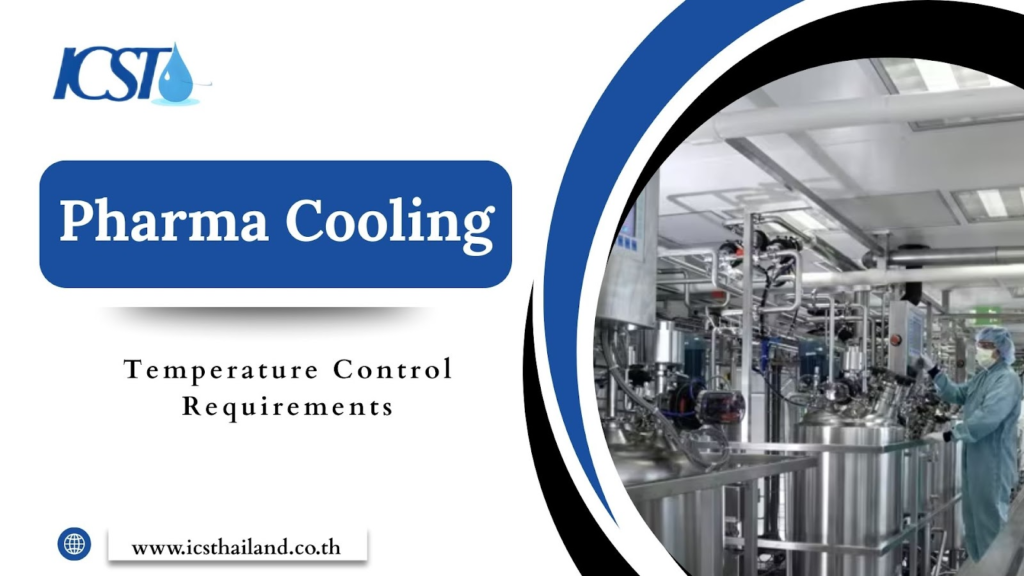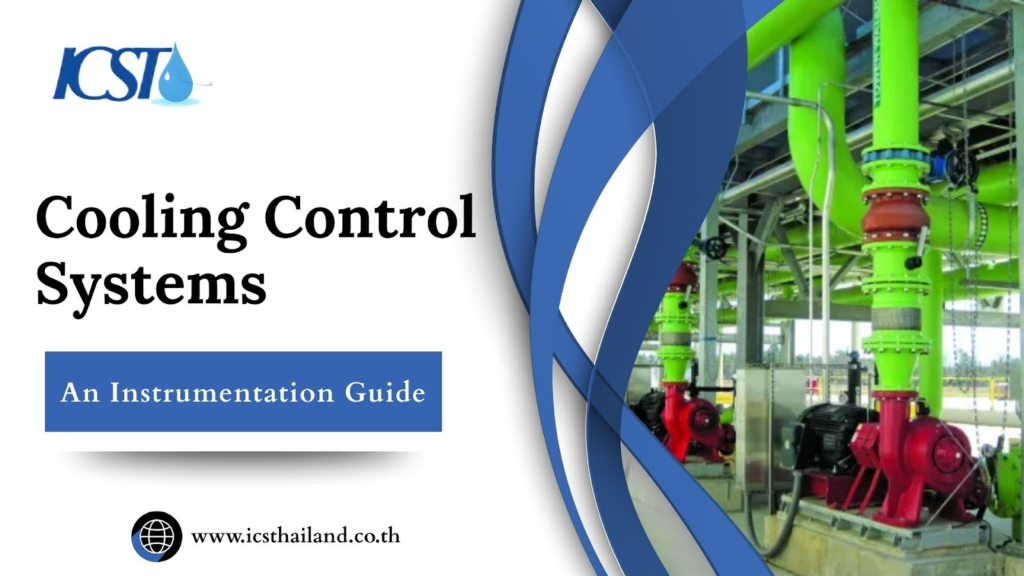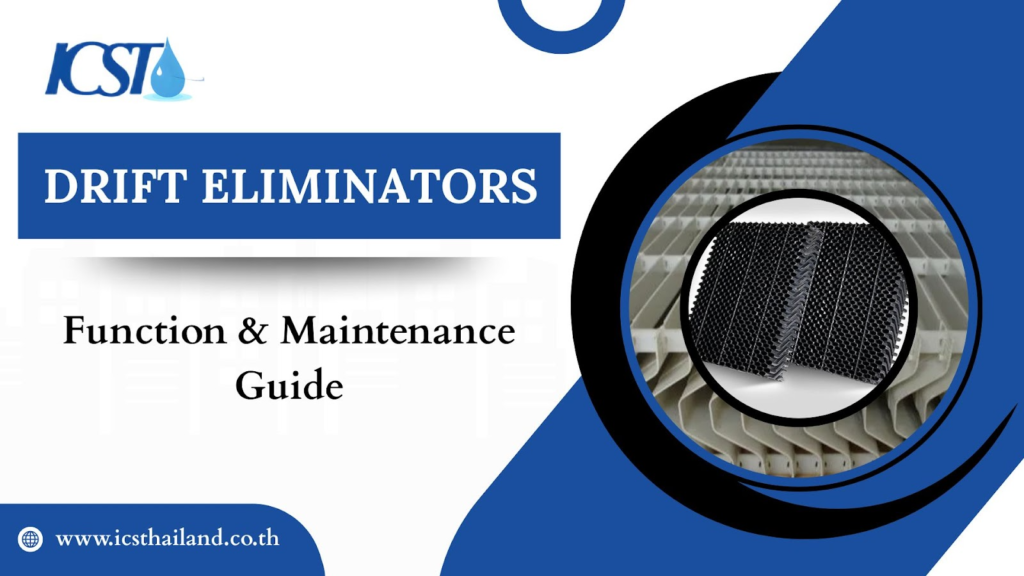Industrial facilities across Southeast Asia face a relentless challenge that many other regions never encounter. The area’s extreme tropical climate creates a perfect storm of conditions. This can cripple even the most robust industrial cooling systems in Southeast Asia. The result is costly downtime and efficiency losses.
From Thailand’s manufacturing hubs to Indonesia’s processing plants, industries rely heavily on cooling systems to maintain optimal operations. Yet the very environment these systems operate in presents unique obstacles that standard cooling solutions simply weren’t designed to handle.
This comprehensive guide examines the specific climatic factors plaguing Southeast Asia, reveals how they directly impact industrial cooling performance, and provides proven solutions to ensure your systems operate efficiently despite nature’s challenges.
Table of Contents
ToggleSoutheast Asia’s Climate: A Unique Challenge for Cooling
High Ambient Temperatures
Southeast Asia’s consistently elevated temperatures create immediate stress on cooling systems. What specific challenges do these heat levels present for industrial operations?
- Reduced heat rejection capacity: Cooling towers face challenges in efficiently releasing heat when the surrounding temperature consistently rises above 35°C (95°F).
- Increased compressor workload: Chillers and air conditioning systems consume significantly more energy to achieve target temperatures
- Elevated approach temperatures: The temperature differential between cooling water and ambient air narrows, reducing overall system efficiency
High Relative Humidity
The region’s humidity levels, often exceeding 80%, create complications that extend far beyond simple discomfort. How does this moisture-laden air affect cooling performance?
High humidity reduces the efficiency of air conditioners, forcing them to work harder to remove excess moisture before cooling the air.
- Limited Evaporative Cooling Potential: High wet-bulb temperatures reduce the effectiveness of evaporative cooling methods
- Accelerated Biological Growth: Warm, moist conditions promote algae, bacteria, and fungi formation within cooling systems
- Enhanced Corrosion Rates: Moisture accelerates oxidation processes, particularly in metal components and structures
Heavy Monsoon Rains & Seasonal Flooding
Monsoon seasons bring intense rainfall and flooding that pose serious risks to cooling infrastructure. What immediate and long-term impacts should facility managers expect?
Immediate concerns include water damage to equipment, system shutdowns, and power outages that disrupt operations..
- Physical structural damage: Intense rainfall and flooding can weaken cooling tower foundations and damage electrical systems
- Water contamination: Floodwaters introduce debris, chemicals, and biological contaminants into cooling water systems
- Access limitations: Flooding can prevent essential maintenance activities during critical periods
Atmospheric Pollution & Dust
Urban and industrial areas across Southeast Asia face significant air quality challenges. Airborne contaminants, such as dust, soot, and chemical pollutants, can accumulate on cooling system components, reducing their efficiency and lifespan.
This accumulation may result in greater energy usage, higher maintenance expenses, and possible system breakdowns. Addressing these challenges requires regular system cleaning and incorporating filtration solutions to protect equipment in polluted environments.
- Heat exchanger fouling: Dust and particles build up on heat transfer surfaces over time, leading to a drop in thermal efficiency
- Fill media blockage: Contaminated air clogs cooling tower fill materials, restricting airflow and heat transfer
- Increased maintenance frequency: Pollutant buildup requires more frequent cleaning cycles and component replacement
The Direct Impacts on Industrial Cooling Systems
Reduced Performance and Efficiency Loss
Climate-related stresses can lead to measurable performance degradation across cooling systems, including reduced efficiency and increased energy consumption.
Higher ambient temperatures force cooling systems to work harder, shortening equipment lifespan and raising maintenance costs.
- Cooling capacity reduction: Systems may operate at 70-80% of rated capacity during peak climate stress periods
- Energy consumption increases: Facilities often see 20-30% higher energy costs due to reduced cooling efficiency
- Temperature control challenges: Maintaining process temperatures becomes increasingly difficult and expensive
Accelerated Corrosion and Degradation
The combination of heat, humidity, and environmental contaminants creates an aggressive corrosive environment. This can lead to the gradual weakening of materials, reducing their structural integrity over time.
Metals may rust, coatings can degrade, and electronic components are particularly vulnerable to failure in such conditions. .
- Metal component deterioration: Steel structures and components can show significant corrosion within 12-18 months without proper protection
- Concrete degradation: Reinforced concrete structures face accelerated carbonation and rebar corrosion
- Seal and gasket failure: Rubber and polymer components degrade faster in high-temperature, high-humidity conditions
Increased Maintenance Demands
Climate-stressed cooling systems require significantly more attention than those in temperate environments. What maintenance challenges do facility teams face?
- Frequent cleaning requirements: Heat exchangers and fill media may need cleaning every 2-4 weeks instead of quarterly
- Component replacement acceleration: Fans, pumps, and motors experience shortened service lives due to environmental stress
- Emergency repairs: Climate-related failures often occur during peak demand periods when systems are most critical
- Increased energy consumption: Systems may require more energy to maintain efficiency under extreme environmental conditions.
- Higher maintenance costs: Frequent repairs and replacements lead to increased operational expenses over time.
Complex Water Management
High rainfall and frequent flooding can overwhelm infrastructure, leading to contamination of water sources. Additionally, rapid urbanization and industrial growth have increased pollution levels, making effective water treatment critical.
- High evaporation rates: Cooling towers may lose 2-3 times more water to evaporation compared to temperate climates
- Concentration of dissolved solids: Rapid evaporation concentrates minerals and chemicals, promoting scaling and corrosion
- Biological contamination: Warm water temperatures encourage bacterial growth, including potentially dangerous legionella
- Increased maintenance requirements: Higher evaporation and mineral buildup demand more frequent cleaning and chemical treatment to maintain efficiency.
- Energy efficiency challenges: Excessive heat and scaling reduce cooling tower performance, leading to higher energy consumption and operational costs.
Designing for Durability: Solutions for Southeast Asia’s Climate
Climate-Specific System Design & Engineering
Effective cooling systems for Southeast Asia require design approaches tailored to local conditions. These systems must account for high humidity levels, often requiring enhanced dehumidification capabilities to maintain comfort.
Energy efficiency is also crucial, with solutions like variable speed compressors and advanced insulation helping to reduce electricity consumption.
- Oversized heat rejection capacity: Design systems with 15-25% additional capacity to maintain performance during extreme weather
- Corrosion-resistant materials: Utilize fiberglass reinforced plastic (FRP), stainless steel, and specialized coatings for extended service life
- Advanced fill media selection: Specify fill materials that resist biological growth and facilitate easy cleaning
- Optimized water distribution systems: Incorporate nozzles and basins designed for uniform water flow to improve cooling efficiency
- Energy-efficient fan technology: Use variable frequency drive (VFD) fans to reduce energy consumption and enhance operational control control
Robust Water Treatment Programs
Comprehensive water treatment becomes critical in Southeast Asia’s challenging environment. Effective strategies often include advanced filtration systems, chemical disinfection, and biological treatment to ensure safe and sustainable water use.
Additionally, investing in modern technologies like reverse osmosis or UV purification can significantly improve water quality and address contamination issues.
- Multi-barrier approach: Combine chemical treatment, filtration, and UV disinfection for comprehensive water quality control
- Real-time monitoring: Install continuous monitoring systems for pH, conductivity, and biocide levels
- Customized chemical programs: Develop treatment protocols specific to local water chemistry and environmental conditions
Proactive and Preventative Maintenance
Climate-stressed systems demand rigorous maintenance approaches to prevent failures. Implementing predictive maintenance powered by data analytics can significantly reduce downtime and extend the lifespan of critical infrastructure.
- Increased inspection frequency: Implement weekly visual inspections and monthly detailed assessments
- Predictive maintenance technologies: Use vibration analysis, thermal imaging, and oil analysis to identify problems before failure
- Seasonal preparation protocols: Develop specific procedures for monsoon season preparation and post-flood recovery
Energy Optimization Measures
Reducing energy consumption becomes crucial when climate stress increases cooling demands. What optimization techniques deliver the greatest impact?
- Variable frequency drives (VFDs): Install VFDs on fans and pumps to optimize energy consumption based on actual cooling demand
- High-efficiency components: Upgrade to premium efficiency motors and aerodynamically optimized fans
- Smart control systems: Implement advanced controls that optimize system operation based on real-time weather conditions
Advanced Monitoring and Automation
Modern monitoring systems provide the visibility needed to maintain optimal performance. They enable real-time tracking, helping businesses quickly identify and address potential issues before they escalate.
Advanced analytics and customizable dashboards offer actionable insights, allowing teams to optimize resources and improve overall efficiency.
- Remote monitoring platforms: Enable 24/7 system oversight and immediate alert notification for critical parameters
- Automated control responses: Program systems to automatically adjust operation based on ambient conditions
- Performance tracking: Maintain detailed records of system performance to identify trends and optimization opportunities
Conclusion
Southeast Asia’s demanding climate presents formidable challenges for industrial cooling systems. However, these obstacles become manageable through strategic design, advanced materials, comprehensive maintenance programs, and modern monitoring technologies.
The key to success lies in recognizing that standard cooling solutions require significant adaptation for tropical environments. Facilities that invest in climate-appropriate cooling infrastructure enjoy improved reliability, lower operating costs, and extended equipment service life.
Ready to optimize your industrial cooling system in Southeast Asia for this challenging climate? Contact ICS Thailand today. Discover how specialized solutions can enhance your performance and secure your operations against environmental challenges.
Frequently Asked Questions
How do high temperatures affect cooling systems?
High ambient temperatures reduce a cooling tower’s heat rejection capacity and increase chiller workload. This leads to reduced system efficiency, higher energy consumption, and difficulty in maintaining target process temperatures.
What problems does high humidity cause for cooling systems?
High humidity reduces evaporative cooling efficiency and accelerates biological growth and corrosion within systems. It also makes air conditioning units work harder, consuming more energy.
How do monsoons impact cooling infrastructure?
Monsoon rains can physically damage components and introduce contaminants, leading to water quality issues. They may also restrict access for essential maintenance.
How can corrosion be managed in tropical cooling systems?
Use corrosion-resistant materials, implement robust water treatment programs, and apply specific corrosion inhibitors. Regular inspections and proper cleaning are also vital.
What are best maintenance practices for humid cooling environments?
Frequent cleaning (every 2-4 weeks), predictive maintenance technologies like vibration analysis, and seasonal preparation protocols are key. Regular water treatment monitoring is also essential.








